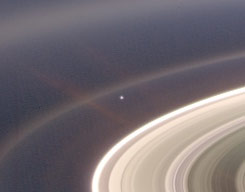I ended up with an extra two days off from work so my best buddy Ray and I decided to take a much coveted vacation in my favorite city in the world, San Francisco. Never mind that S.F. is less than an hour from my doorstep. I saved the money on a plane ticket so I felt free to spend carelessly all week.
My vacation started off slow, as we went to three places that were closed. Our first stop would have been the South Park Cafe. But being closed, I enjoyed watching artists work their easels in the park. Leaving South Park, we happened upon a fantastic gallery that runs there own printing press. I watched the machinery print rather unspectacular cards and realized that I am in love with every part of the book-making process. This gallery had, in addition to standard art, many hand-made books.
Failed destination #2 was the Arkansas Friendship Garden. We climbed high on Potrero Hill to not get there. On the steepest streets, instead of sidewalks there are stairs. No wonder the people of this city are more friendly and tolerant. I would have been impatient at all the false starts if the views weren’t so spectacular. The sun glinting off rows of cars on distant city streets looked like mercury floating in rivulets down the side of the hills. And this isn’t Nob Hill; this is standing next to project housing. Already tired and hungry, we trek to the Mission to sign up for a mural tour, which only runs on the weekends (It was Thursday).
Backtrack a bit, the Mission and North Beach have been in competition for my favorite ghettos of the city. The former is Mexican and the latter is Italian, though also known for being the site of the Beat Rennaissance in the sixties. I had been to some mediocre bars in the Mission, primarily around 16th and 17th St., but I had never spent a day walking through the neigbhoorhood’s South side. Every other building is brightened by colorful murals, most of which honor revolutionaries, activists and their ideals. 24th St. is mostly restaurants and small groceries, with the ocassional shop or gallery.
We got a banana for a quarter at a local bodega and some fantastic pastries for a dollar each. Then we caught lunch at La Nueva Fruitlandia. I haven’t had Cuban food so good since eating my Cuban bisabuela’s recipes as a child. We tried to stop at a gallery for local hispanic radical artists but, keeping with the theme, they were closed to prepare for a big opening night. So instead we happily browsed the shops. One shop sold mostly carnival accessories for Day of the Dead and little Mexican dresses for girls to wear to church. But they also carried a lot of Zapatista products and we walked out of there with Zapatista (light roast!) coffee and coffee flavored honey. I also acquired a wrist warmer with Che’s visage for only $2.50. That’s something you won’t find in North Beach.
We turned North onto Valencia, which is more of a commercial main drag. Valencia St. is low-key bars, vintage and kitsch shops, shamelessly radical bookstores and vegetarian chow.
Ray and I happened upon a small side street, more like an alley that goes through, that was entirely covered in graffiti art. I should say, murals, because most of the work was not stylized in the typical graffiti style and you could tell they were all by different artists. Stepping into the alley, we could hear a woman wailing but this did not deter us from taking in the artful walls. I thought the woman was in the thin walls of one of these muraled studio apartments but about half way we found her sitting indian-style with her head in her hands. She appeared to be holding some sort of pipe. Her face was ragged and wrinkled and dirty. She was likely homeless. Her suffering moved me. I asked her if she wanted a hug. She said “sure.” Then she stood up and I held this her in my arms while she sobbed and sobbed. I held her tightly and didn’t let go until she did first. She asked if I had a cigarette and of course I didn’t. We left her still tearful, but no longer filling the corrider with her anguished sobs.
Then a strange coincidence happened. I have hugged a tattered old San Franciscan once before, when I was drunk at the Bar in the Castro. This was after a conversation about her manic depression, as I recall. The first place we went after the alley of art was a small boutique. As I was entering the shop, that same woman I hugged in the Castro was leaving. She didn’t recognize me.
We stopped in 426 Valencia, which is Dave Eggar’s program that teaches creative writing to kids. The project is partly funded by the pirate shop at the entrance. The pirate motif is also a ruse to entrance the kids into getting excited about writing (426 Valencia has been very successful, so you might have heard of other centers around the country). I was hastily filling out a volunteer application when I heard the guy behind the counter telling people it was closing time. I didn’t look up, but I overheard a dejected couple responding. In coindidence #2, the dejeced couple was Lawrence and Cecily; they were staying at my house for a few nights before they move to L.A.
Later we meet up with Lawrence, Cecily, Jeremy and my sweetie at Delirium to have drinks. We barhop to Zeitgeist, a biker bar with fantastic bloody marys and terrible music. Day two of my vacation continues with a youth hostel, North Beach and the search for the perfect San Francisco bar.


